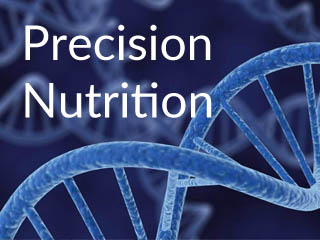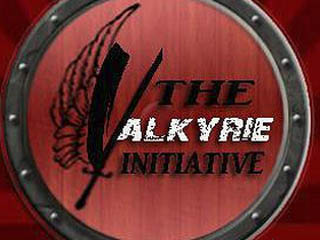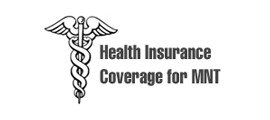 The number one benefit of exercise is not weight loss, or improved energy, or feeling good about yourself. It’s the ability to pull healing oxygen into your body. Even though those other things tend to be goals and great side effects, but oxygen is one of the most essential elements for improving your health and longevity.
The number one benefit of exercise is not weight loss, or improved energy, or feeling good about yourself. It’s the ability to pull healing oxygen into your body. Even though those other things tend to be goals and great side effects, but oxygen is one of the most essential elements for improving your health and longevity.
Any exercise is better than no exercise, but the goal is to incorporate some type of physical activity into your DAILY life! The amount, type and duration may vary, but it is extremely important to move every day. The best type of exercise is a conscious exercise. One where you know you are doing it for the fun or health of it. I have heard it too many times, “but I chase after my kids all day”, or “I am on my feet at work all day”, yet, the results aren’t there and health is deteriorating. The problem with unconscious exercise is that it many times comes with stress. Stress actually inhibits fat loss, increases belly fat, and increases disease risk. This is why I stress conscious physical activity.
Why is it so important to exercise? Exercise is one of the best ways to bring down stress hormones and normalize metabolic imbalances. It improves body composition and slows the aging process. It also can give you a feeling of joy and accomplishment leading to improved self esteem and feelings of peace. Mainly, it helps oxygenate your body helping to reduce disease.
Western diets today are very acidic. They are full of processed foods, especially high sugar carbohydrates, and sodium and low in vital nutrients such as potassium, magnesium, zinc. This type of diet along with environmental toxins, lack of exercise, and stress leads to a very acidic body. An acidic body creates a low oxygen (also known as anaerobic) environment. Bacteria, fungus and viruses thrive in this environment. This can cause a decrease in immune function and ultimately disease.
There are three main types of exercise that should be a part of your exercise regimen; flexibility, resistance, and cardiopulmonary. Each serves an important purpose. Warm up and flexibility are important for preparing muscles as well as aiding in the release of toxins. Resistance training is important for increasing and maintaining vital metabolic tissue known as muscle. Cardiopulmonary is important for strengthening the heart and improving respiration and lung function.
What happens when you exercise?
As you begin to exercise, you bring in oxygen through your lungs and into your blood. This oxygen is transported to your muscles to be utilized for energy. Muscles store glycogen for energy. Oxygen is needed to convert these sugars into energy. Remember, oxygen is vital for metabolism, energy, and life. This process of oxygen utilization is called the aerobic state. The body then releases waste from this energy process in the form of CO2 and other byproducts. The blood then carries CO2 and byproducts back to the lungs for release. Continued exercise or intense exercise can lead to a greater need for oxygen. This is called the anaerobic state. Forcing your body to utilize stored glycogen too quickly (such as heavy weight training or sprinting) or running out of stored glycogen can increase the need for more oxygen. The body recognizes this need and is forced to use other means for energy. This switch in metabolism leads to a build up of lactic acid. This build up causes the body to fatigue due to the inefficient use of energy. The body is forced to either slow down or rest to regain proper metabolic balance and ability to use oxygen more efficiently. Your ability to store glycogen and utilize oxygen are the key factors in performance and fatigue. This is why training or progressive exercise is so important.
Training or progressive exercise helps your heart become stronger allowing it to pump larger volumes of oxygenated blood to your muscles. Progressive exercise also forces your muscles to become stronger, more dense and able to store more glycogen for energy. Your ability to store glycogen along with increased ability to pump more blood allows breathing to become less labored and more relaxed. Increasing exercise triggers your sympathetic nervous system to bring about all these changes stated above.
Exercise helps to lower insulin and cortisol levels. Exercise actually mimics the action of insulin by improving utilization of glucose at the cellular level. It also helps utilize fat for energy. Stress does the exact opposite! Exercise can also release endorphins and bring about good feelings.
What is the best exercise?
All exercise is good exercise. The best is conscious exercise where all three elements are used. Conscious exercise can be any time anywhere. All it means is that you are thinking about and committing yourself to taking care of your body, even if only for 10 minutes at a time. Conscious exercise is comparable to conscious eating. We choose to eat well or we choose to eat poorly. Exercise is also a choice. We choose to park far away from the entrance or we choose to drive another 10 minutes to find the closest spot.
When it comes to exercise, you have to ask yourself what your goal is. Is it to burn fat? De-stress? Gain flexibility? Complete a marathon? Feel better? Each goal will direct you toward a conscious exercise regimen. For most people, they want to feel good, burn fat and stay fit in the least amount of time. The three elements, flexibility, resistance training, and cardio will help accomplish this. Pencil exercise into your day. For example, you may only be able to do some sort of resistance training 2 times a week. You may need to buy some home videos when you can’t get to the gym. You may find the gym boring and would rather sign up for a class or outdoor club. You may need to get up earlier or do part of it during your lunch break. Whatever it is, it’s important to be conscious of it and plan.
Sample Plan For the Novice
- Monday: Walk 30 minutes during lunch, stretch
- Tuesday: meet at gym for weight training, stretch
- Wednesday: Walk/run at the gym 30 min, stretch
- Thursday: Do early pilates class at the YMCA
- Friday: Walk 20 minutes during lunch, take an after dinner walk.
- Saturday: garden and yoga
- Sunday: morning walk 10 minutes with my coffee.
Sample Plan for the Moderate
- Monday: Run 20 minutes after work, stretch
- Tuesday: weight training at the gym stretch
- Wednesday: Get up early morning, 20 min run, stretch
- Thursday: weight training after work, stretch.
- Friday: Walk 20 minutes during lunch, take an after dinner walk.
- Saturday: garden and yoga
- Sunday: morning walk 10 minutes with my coffee.
Sample Plan Moderate-Intense
- Monday: 5 mile run in morning
- Tuesday: weight training after work
- Wednesday: Walk during lunch, weight training after work
- Thursday: 12 mile bike ride
- Friday: Walk during lunch, weight train after work
- Saturday: yard work
- Sunday: 3 mile run in the morning.
(stretch each day)
Be specific with your planning. Enter times along with your days and which activity you plan on doing. If you have never exercised at all, try smaller goals, such as 10 minutes of walking every day. After each week, set a new goal where you progress by either time, duration, or mileage. It is important to progress. If you stay the same, your body will also stay the same.
Resting is also a very important part of exercise. Resting can consist of a lighter exercise day and or good sleeping habits. This does not mean you must stop or reduce your exercise. The only time you should stop exercise is if you have a serious illness (not a cold) or health concern such as an injury. Exercise is one of the best ways to improve immunity and health along with diet and stress management. Proper sleep is important because the body does most of it’s repairing and rebuilding during R.E.M. sleep.
See energy and recovery foods
See high intensity vs. low intensity




 Providing nutritional therapy and lifestyle education for disease prevention and weight management....
Providing nutritional therapy and lifestyle education for disease prevention and weight management....